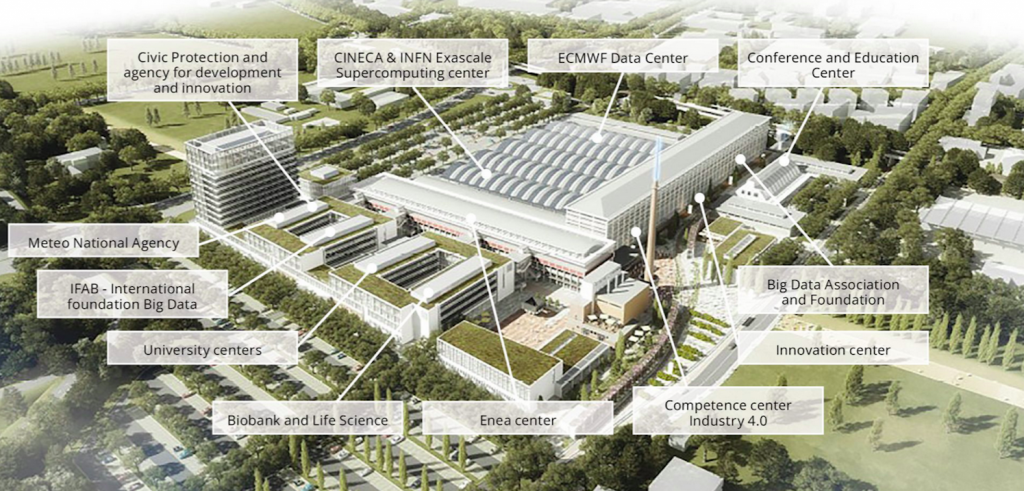Cutting-edge research in high performance computing (HPC) and climate studies can now count on a hub of strategic international importance inaugurated in Bologna, recently visited by the European Commissioner for Innovation, Research, Culture, Education and Youth, Mariya Gabriel, the Minister of University and Research, Maria Cristina Messa, and the Minister of Education, Patrizio Bianchi.
The innovative Technopole covers an area of over 120,000 square metres, the former tobacco factory site. The facility now hosts the new data centre of the ECMWF, European Centre for Medium-Range Weather Forecasts: an independent organization supported by more than 30 states, including Italy, which is both a research institute and a 24-hour operational service, producing and disseminating numerical weather predictions to its member states. The Centre will process data from satellites, ground stations, marine buoys, aircraft and ships from all over the world, providing key information for national weather services and civil protection.

“The data and high-performance computing facility of the ECMWF Centre in Bologna is important not only as a world-class infrastructure but also for the development of cutting-edge knowledge, allowing Europe to continue to be a leader in reliable and authoritative information on climate change,” said EU Commissioner Mariya Gabriel during her visit to the Technopole.
The relocation of the ECMWF activities, worth 63 million euro, was funded by the Ministry of University and Research (MUR) with 43.5 million euro and by Regione Emilia-Romagna with 19.5 million euro. The MUR also makes an annual contribution of about 10.5 million euro to the ECMWF.
In addition to the ECMWF data centre, the Bologna Technopole will be home to LEONARDO, one of the world’s most powerful supercomputers, currently under construction, which will lead Italy towards the exascale class of high performance computing for research and innovation.
Managed by a consortium led by CINECA (Interuniversity Consortium for Automatic Computing), which also involves the INFN (National Institute for Nuclear Physics) and SISSA (International School for Advanced Studies), LEONARDO will be one of the seven supercomputers of EuroHPC,the first European high-performance computing network for the creation of a world-class supercomputing ecosystem.
LEONARDO – funded with a total budget of 120 million euro over seven years (2019-2025) by the Ministry of University and Research and with a further 120 million euro by the EuroHPC Joint Undertaking– will have an impact in a number of fields: from the management of risk related to natural hazards and pandemics to predictive medicine, from the development of new materials to cybersecurity, from weather forecasting to Artificial Intelligence.
“Consolidating the results achieved and adequately addressing the challenges of tomorrow is fundamental for a country like ours that aims to have a prominent position in the international scientific community,” said the Minister of University and Research, Maria Cristina Messa. “Thanks to investments in HPC, Italy will be able to play a leading role in Europe and globally, with particular attention to the Mediterranean area. At the Technopole, we can reaffirm the principles that inspired the European Union. Thanks to LEONARDO and the European HPC network, the Union is stronger and more attractive: if we act in collaboration and go beyond the borders between the Member States, Europe will become a more credible player at global level, constantly evolving in order to be ready for the challenges of tomorrow.”

